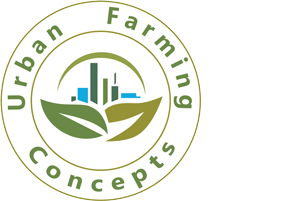What are Microgreens?
Microgreens, as the word “micro” says, are young vegetable greens. They are baby plants that come between a sprout and baby green. They are about 1-3 inches tall and are harvested after cotyledon leaves have developed. Microgreens are also known as micro herbs. They can come in 50-60 different varieties of colors and textures and have an aromatic flavor.
Don’t confuse them with sprouts, which do not have leaves. Microgreens are harvested 7-21 days after germination whereas sprouts have a shorter growing cycle of 2-7 days. Microgreens can be sold before being harvested, so we can keep them alive until they are consumed. Microgreens gradually gained popularity after their introduction to the Californian restaurant in the 1980s. Even with their small size, they are nutrient-rich, usually containing higher nutrient levels than most mature vegetables. So they can be added to any diet for a healthy lifestyle.
Due to their high pricing, microgreens are only bound to fancy dinner plates and boutique grocery stores. After harvesting, the growers need fresh soil, seed, and a growing mat for their next batch. These costs are additional compared to matured vegetables which regrow after they’re cut. Microgreens are convenient to grow in different places like outdoors, greenhouses, and windowsills. As they can be grown at home, the use of microgreens is a multitude.
Health Benefits of Microgreens
As per scientific research, microgreens are a real superfood loaded with antioxidants and other health-promoting nutrients. It has countless health benefits and can help in lowering the risk of getting many diseases. This is because of the large amounts of vitamins and minerals present in them.
Let us see the nutritional facts of these tiny greens:
- These young seedlings are a great source of vitamin C, which protects the body from harmful free radicals.
- The general microgreen cotyledon leaves have significantly more nutritional contents than their mature counterparts. According to a journal, lettuce seedlings harvested after 7 days of germination had the highest antioxidant and health-promoting phenolic compounds.
- They also carry vitamin K which plays an important role in maintaining healthy and strong bones. It also helps in normal blood clotting and preventing excessive bruising.
- Microgreens are filled with beta-carotene content and other carotenoids like lutein and zeaxanthin. They help in reducing the risk of eye disease and cancer.
- Microgreens are a great source of vitamin E. Young pea seedlings contain remarkable levels of vitamin E.
The important health benefits include the following:
- Increased immunity
As mentioned above, microgreens contain a good amount of vitamin C. As we all know, vitamin C is a great immunity booster. It increases the production of white blood cells that fights off infections such as the common cold and flu.
- Helps in cancer fight
Microgreens have anti-cancer properties that reduce the risk of cancer. Sulforaphane, which is mostly found in broccoli microgreens, can kill cancer stem cells.
- Reduction in the risk of heart disease
Heart health, which is of great concern today, can be improved by adding microgreens to your diet. It helps in managing blood pressure and hence lowers the chances of a heart attack. Consuming fresh, nutrient-dense greens daily is an easy way of achieving a heart-healthy lifestyle.
- Improved eyesight.
Microgreens contain lutein which has anti-inflammatory properties and improves eye health. It is good for preventing age-related blindness and vision impairment.
- Reduce constipation
Microgreens come with a good amount of fiber content. So it can help in reducing constipation.
- Lower cholesterol levels
Red cabbage microgreens can help in weight loss and lower cholesterol levels.
- Preventing digestive diseases
The prebiotic fiber content in the microgreens supplements the growth of intestinal bacteria which in turn improves overall health.
Conclusion
We’ve long known that eating fresh leafy vegetables has numerous health advantages. Adding microgreens to your diet is a good idea if you’re aiming for better health. Since microgreens are consumed in the seedling stage, you can grow them throughout the year to meet daily nutritional needs. It is a cost-effective way to improve the daily intake of nutrients without having to buy much-matured vegetables.


